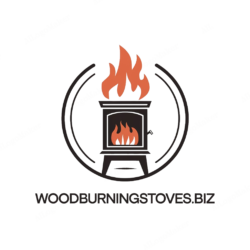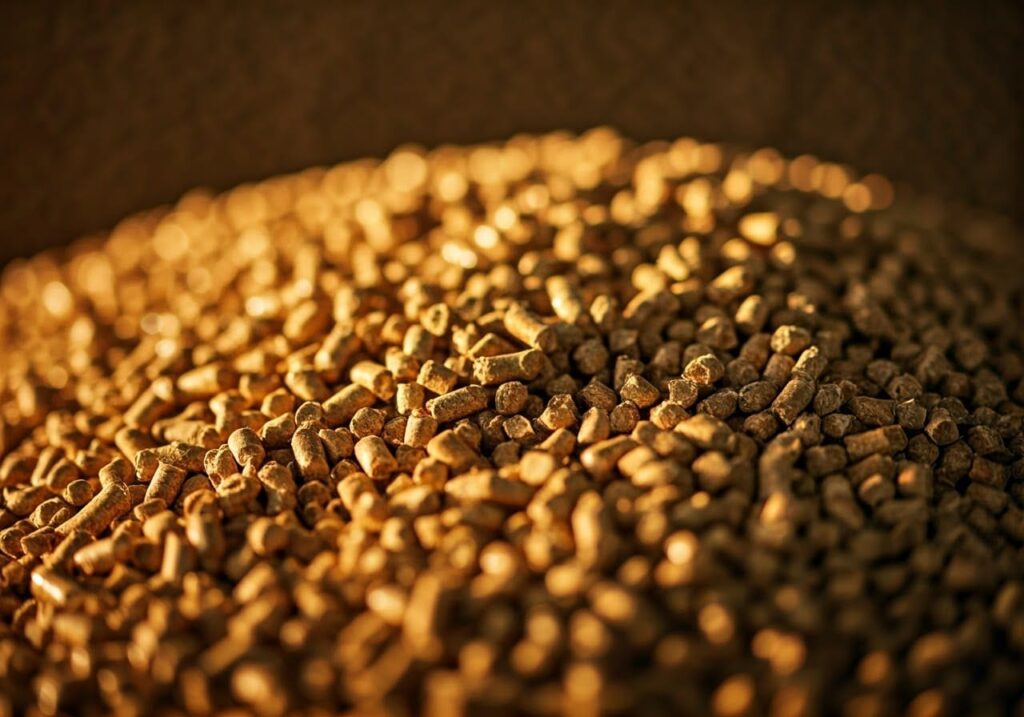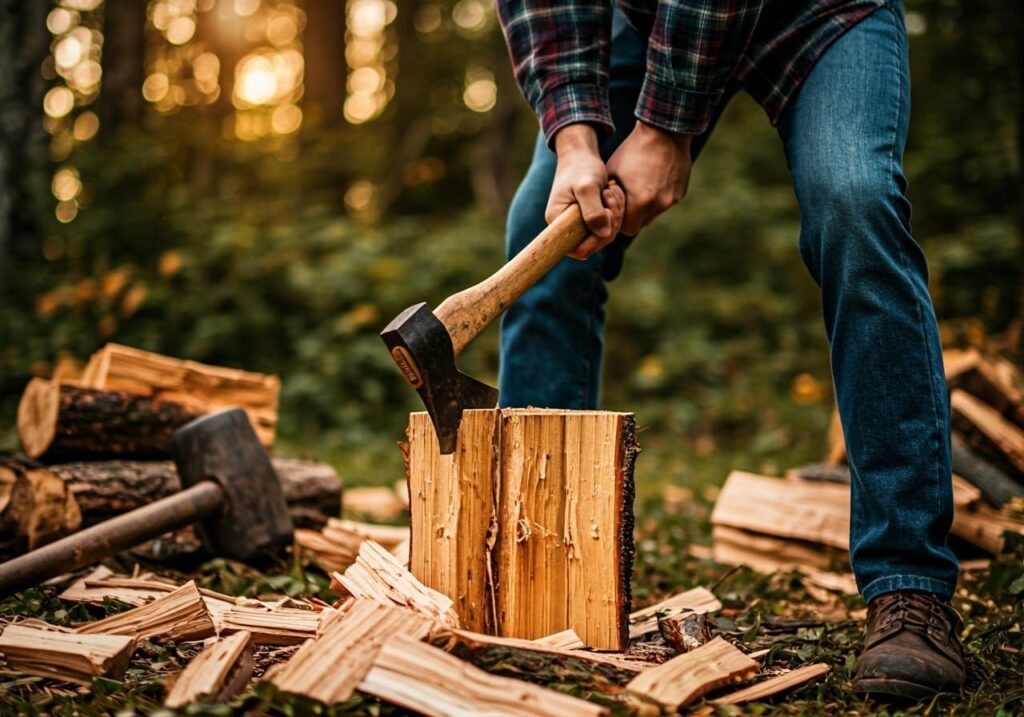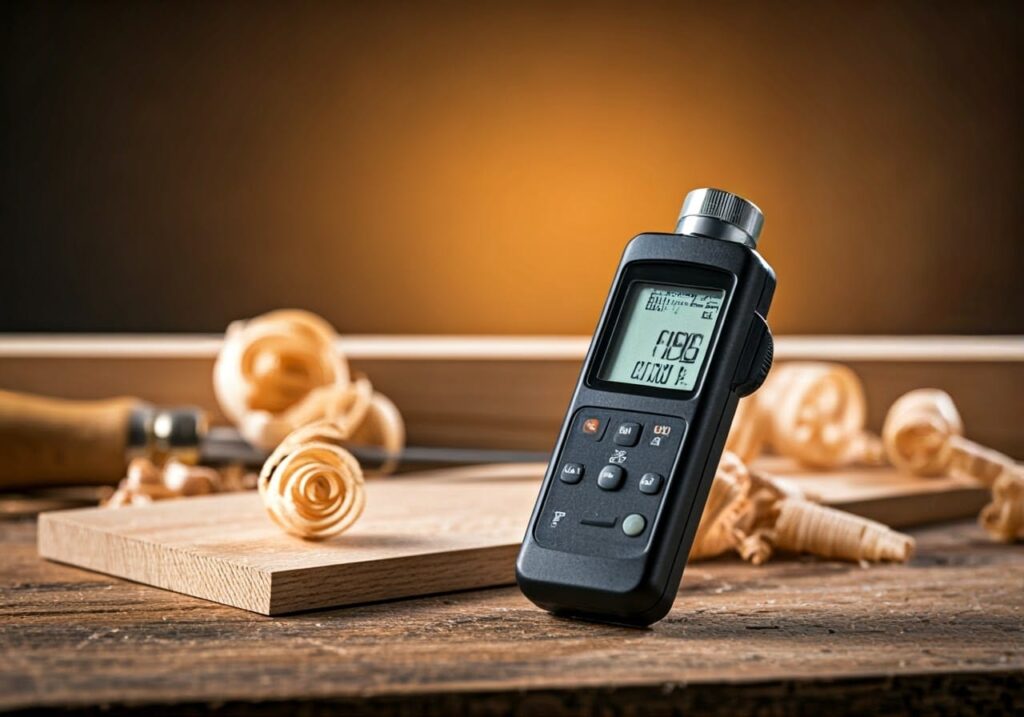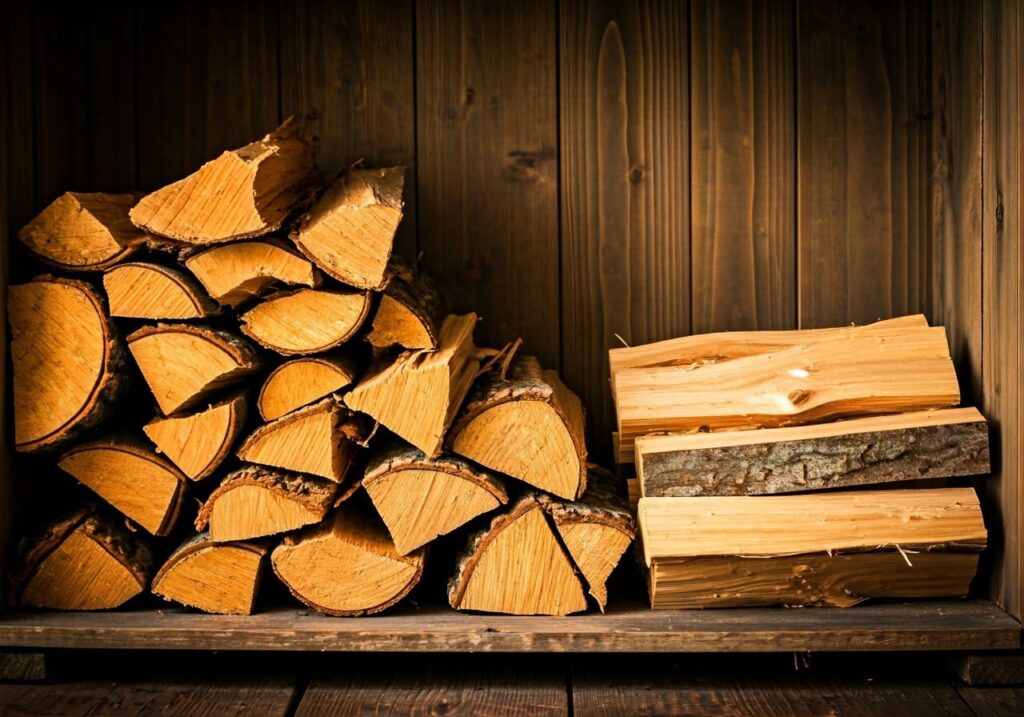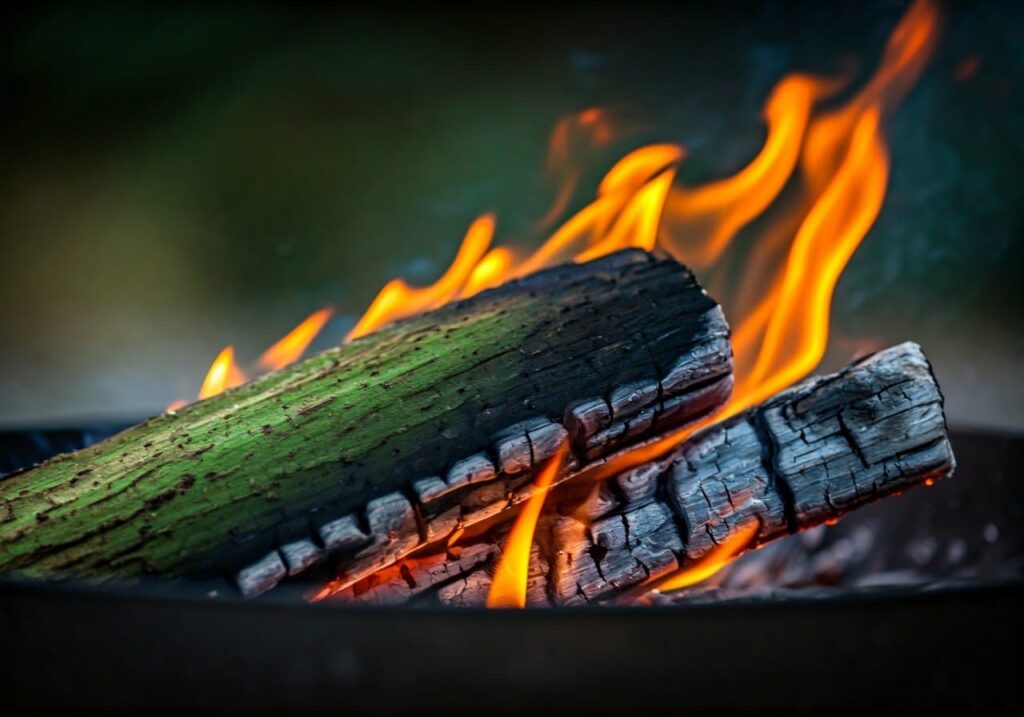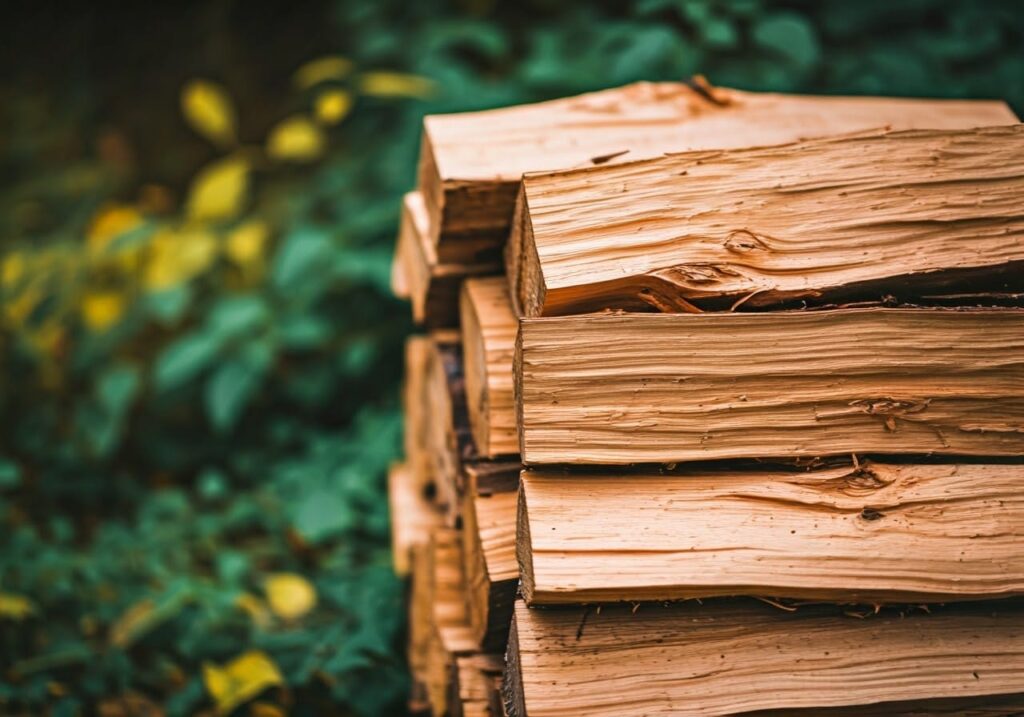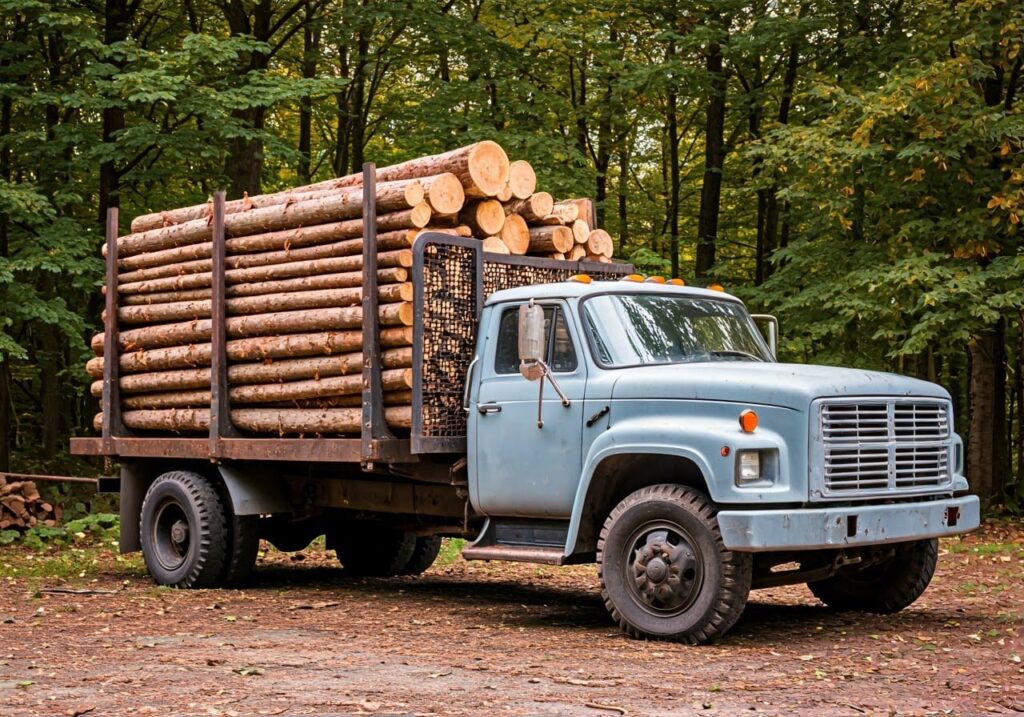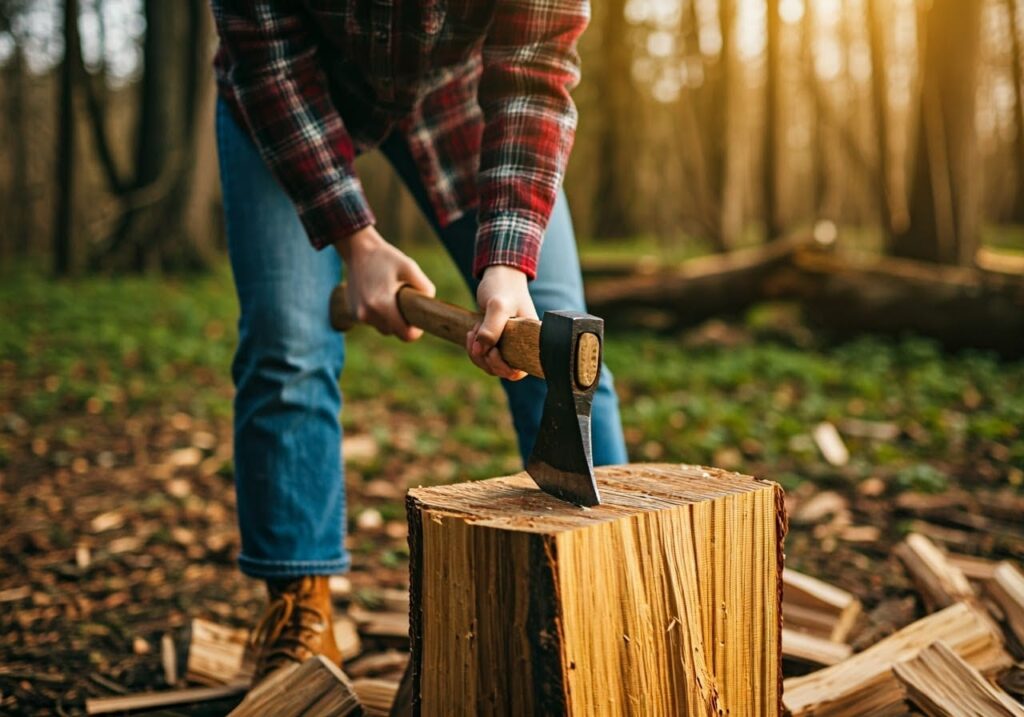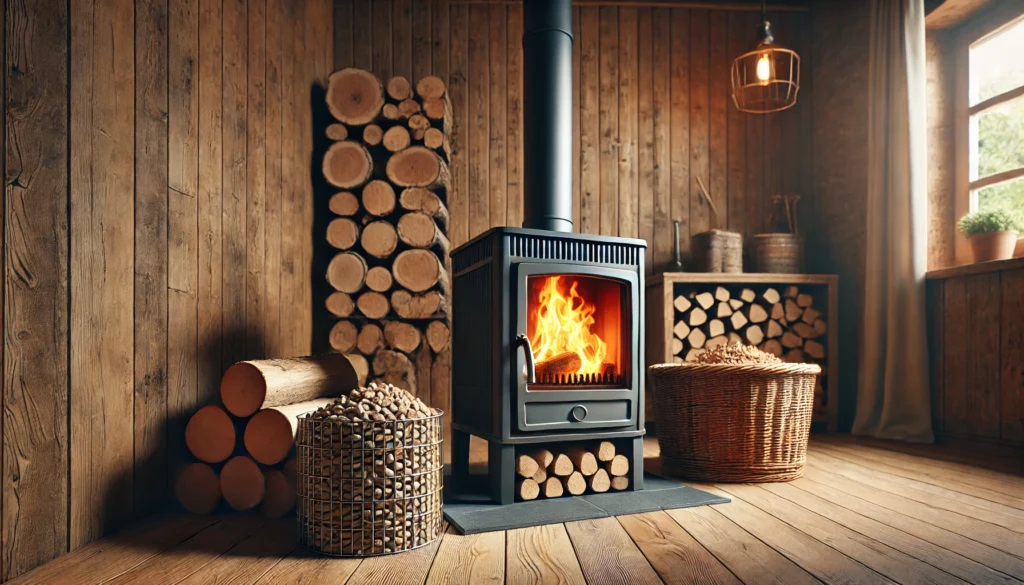Introduction
When it comes to heating with wood-burning stoves, the type of fuel you use can make all the difference. From heating efficiency to maintenance and environmental impact, your choice of fuel can affect how well your stove performs and how cozy your space feels. In this guide, we’ll break down the best types of wood, alternative fuels, and key factors to keep your wood-burning stove working at its best.
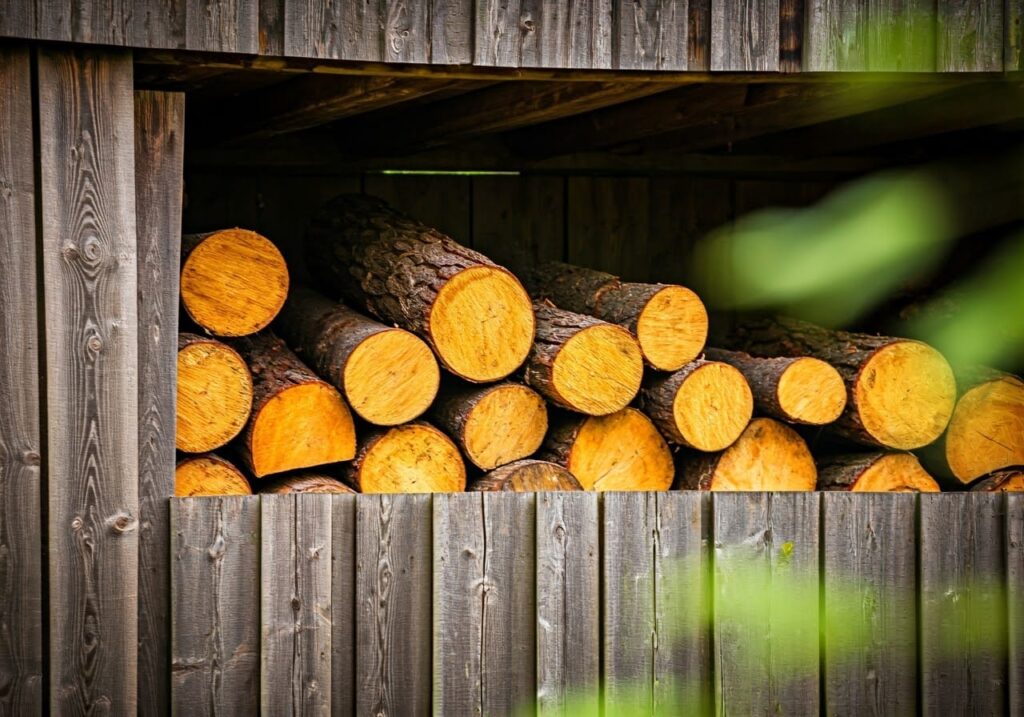
Listen to our Podcast on Choosing a Good Fuel
1. The Basics: What Makes Good Fuel for Wood-Burning Stoves?
For wood-burning stoves, fuel quality matters. The best wood for burning is hardwood—specifically seasoned or kiln-dried options with a low moisture content (ideally below 20%). Choosing high-quality wood can:
- Boost energy efficiency
- Provide a clean burn with minimal smoke
- Prolong your stove’s lifespan by reducing creosote buildup in the chimney
2. Hardwood vs. Softwood: Which is Better?
- Hardwood like oak, ash, and maple is dense and burns longer. It’s ideal for a sustained, high-temperature fire and is more energy-efficient.
- Softwood (e.g., pine and fir) burns faster and is typically used for kindling to start a fire but isn’t ideal for long-term heating.
Using hardwood over softwood:
- Heating Efficiency: Hardwoods provide more energy per log, so you’ll use fewer logs for the same amount of heat.
- Burn Quality: Hardwoods tend to burn cleaner, leading to less residue and fewer emissions.
3. Seasoned vs. Kiln-Dried Wood
Wood needs to be dry to burn effectively. Seasoned wood is air-dried for 6-12 months to reduce moisture, while kiln-dried wood is dried in a kiln for quick results and even lower moisture.
- Seasoned Wood: Naturally dried, taking longer but still effective
- Kiln-Dried Wood: Ready to burn with moisture levels of 10-15%, often more efficient than seasoned wood
Tip: Avoid using green (freshly cut) wood. With high moisture, green wood releases less heat and more smoke, which can lead to creosote buildup.
4. Alternative Fuel Options: Compressed Logs, Biomass Pellets, and Renewable Fuel
For those looking to move beyond traditional logs, alternative fuels offer sustainable, efficient solutions.
- Compressed Logs: Made from sawdust and wood shavings, compressed logs are dense, efficient, and provide a reliable, steady burn.
- Biomass Pellets: Small, dense pellets made from organic materials, offering up to 90% energy efficiency in compatible pellet stoves.
- Renewable Fuel Options: Fuels like corn pellets, recycled wood pellets, and even some types of wax firelogs are designed for high efficiency and a balanced burn, reducing your environmental footprint.
Each of these options is suitable for pellet stoves or certain types of wood-burning appliances and can often be more cost-effective than traditional firewood.
5. Managing Moisture Levels for a Balanced Burn
Moisture content impacts how well wood burns. Ideal moisture content is below 20% for a consistent, efficient burn.
- Measuring Moisture: Use a moisture meter to ensure wood is dry enough for optimal burning.
- Storage: Keep wood stored in a dry, ventilated space to prevent it from absorbing moisture from the environment.
6. Storage Tips for Fuel Longevity
Proper storage can make all the difference:
- Keep Wood Off the Ground: Use pallets or wood racks to keep logs from drawing ground moisture.
- Cover but Ventilate: Cover wood with a tarp but allow air to circulate, which helps prevent mold.
- Rotate Older Logs: Use older logs first to avoid moisture buildup over time.
7. Understanding the Costs and Efficiency of Fuel Choices
Different fuels have varying costs and efficiencies:
- Firewood: Costs vary by region, but buying in bulk (e.g., cord wood) can be economical.
- Pellets: Often sold by the ton, biomass pellets can cost more upfront but offer high efficiency in compatible stoves.
- Compressed Logs and Renewable Fuel Options: Generally a bit pricier than traditional firewood but offer a clean, consistent burn with fewer emissions.
Quick Stat: Kiln-dried wood has about 30-50% more heat efficiency than seasoned wood, making it a worthwhile investment for users in colder climates.
8. Environmental Impact: Clean-Burning Fuels and Renewable Options
When choosing fuel, consider the impact on the environment:
- Clean-Burning Options: Hardwoods, kiln-dried logs, and biomass pellets all create less smoke and emissions.
- Renewable Fuel Sources: Renewable sources of energy like recycled sawdust, agricultural waste, and even corn pellets offer a lower carbon footprint.
9. Keeping Your Wood-Burning Stove Efficient with the Right Fuel
To make the most of your wood-burning stove:
- Choose Hardwood or High-Quality Alternatives: For optimal performance, opt for seasoned hardwood or premium alternatives.
- Check for Clean-Burning and Renewable Labels: These will give you the most efficient, eco-friendly burn.
- Perform Regular Maintenance: Ensure your stove and chimney are cleaned regularly to avoid buildup that can reduce efficiency and safety.
10. Tips for Reducing Heating Costs with Efficient Fuel Use
One of the best ways to keep heating costs low with a wood-burning stove is to focus on fuel efficiency. While using high-quality hardwood like oak or ash offers the best heat output per log, there are additional strategies to stretch your fuel and lower expenses.
- Start with Kindling and Build Up: Begin with smaller pieces of softwood kindling to establish a solid flame quickly, then gradually add larger hardwood logs. This layered approach ensures an efficient, longer-lasting burn.
- Invest in a Quality Moisture Meter: Wet wood wastes energy because much of the fire’s heat is used to evaporate water rather than warming your home. A moisture meter helps you check if your logs are dry enough (below 20% moisture) to burn efficiently.
- Consider Compressed Logs or Pellets for Consistency: These options often provide a steady, high-energy burn that reduces the need for constant refueling. Though slightly pricier upfront, they tend to be economical because they burn longer with fewer emissions.
Using these tips, you’ll reduce fuel waste, maintain a balanced burn, and make your wood-burning stove a reliable source of affordable heat all winter.
Table: Comparison of Fuel Types for Wood-Burning Stoves
| Fuel Type | Heat Output | Burn Duration | Moisture Requirement | Cost | Environmental Impact |
|---|---|---|---|---|---|
| Hardwood (e.g., Oak, Ash) | High | Long | Low (Seasoned/Kiln-Dried) | $$ – $$$ | Clean burn, low emissions |
| Softwood (e.g., Pine, Fir) | Moderate | Short | Low (Seasoned/Kiln-Dried) | $ – $$ | Higher smoke, shorter burn |
| Compressed Logs | High | Long | Very Low | $$ – $$$ | Low emissions, consistent burn |
| Biomass Pellets | Very High | Very Long | Very Low | $$ – $$$ | Renewable, highly efficient |
| Corn Pellets | High | Moderate | Very Low | $$ | Renewable, moderate emissions |
| Wax Firelogs | Moderate | Long | None | $$ – $$$ | Mixed impact, some with recycled content |
This table gives a snapshot of various fuel options, allowing you to compare their heat output, cost-effectiveness, and environmental impact to find the best match for your heating needs.
Fuel Cost Calculator
Heating Fuel Cost Comparison
Compare annual heating costs across different fuel types
Your Home Details
Current Fuel Prices
Annual Heating Cost Estimates
Conclusion
Fuel choice for wood-burning stoves isn’t just about staying warm—it’s about maximizing efficiency, reducing emissions, and choosing a sustainable heat source. Whether you’re using hardwood, exploring biomass pellets, or considering compressed logs, there’s an option that fits your heating needs and environmental goals.
This guide will help users make smarter choices, get more warmth for each log, and keep their wood-burning stove running smoothly season after season. Ready to maximize your stove’s efficiency? Choose the right fuel, store it properly, and enjoy the heat!
Discover more about Fuel for Wood Burning Stoves
Alternative Fuel Options: Compressed Logs, Biomass Pellets, and Renewable Fuel
As the world shifts towards more sustainable and environmentally friendly practices, the quest for alternative fuel options has become a focal point for homeowners, businesses,…
The Environmental Impact of Cutting Your Own Firewood: A Balanced Perspective
The practice of harvesting your own firewood has both environmental benefits and potential drawbacks that deserve careful consideration. As more people turn to wood heating…
Seasoned Firewood: A Complete Testing Guide
Learning to identify well-seasoned firewood is essential for efficient wood burning and optimal stove performance. This comprehensive guide covers testing methods, moisture measurement, and visual…
Top 5 Small Space Firewood Storage Solutions: Compact Wood Storage Ideas
Embracing the Warmth of Wood-Burning Living in Compact Environments As the crackle of a wood-burning fireplace or the warmth of a wood stove becomes an…
Can You Burn Green Wood in a Wood Stove? Pros and Cons
Understanding the implications of burning unseasoned wood, fresh-cut logs, or green timber in your wood-burning stove is crucial for both safety and efficiency. This comprehensive…
How to Store Firewood Outdoors to Keep It Dry and Ready
Proper outdoor firewood storage is crucial for maintaining wood quality and ensuring efficient burning. Whether you have a small backyard or acres of land, implementing…
Where to Buy Firewood for Your Wood Stove: A Comprehensive Guide
Finding reliable sources for quality firewood can be challenging, especially if you’re new to wood heating. This guide will help you navigate the firewood market,…
How to Properly Season Firewood for Efficient Burning
Properly season firewood for efficient burning, maximum heat output, and maintaining the health of your wood stove. This comprehensive guide will walk you through the…
Hardwood vs. Softwood: Which Is Better for Your Wood Stove?
When it comes to heating your home with a wood stove, one of the most common questions is whether to burn hardwood or softwood. This…
The Best Types of Wood to Burn in a Wood Stove: A Complete Guide
Are you looking to maximize the heat output and efficiency of your wood stove? The type of wood you choose can make a significant difference…
